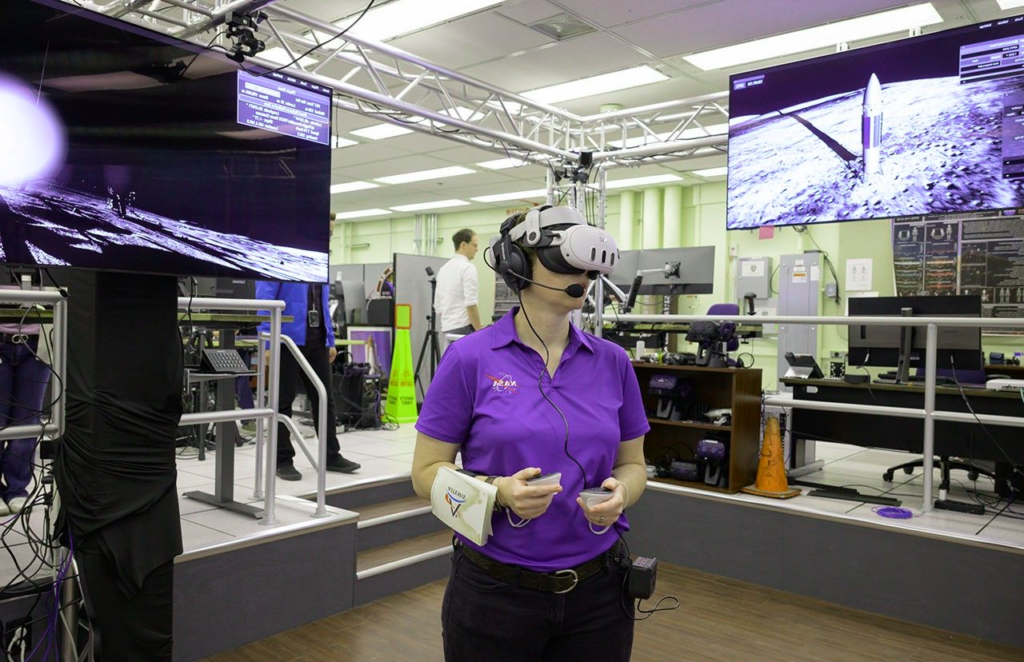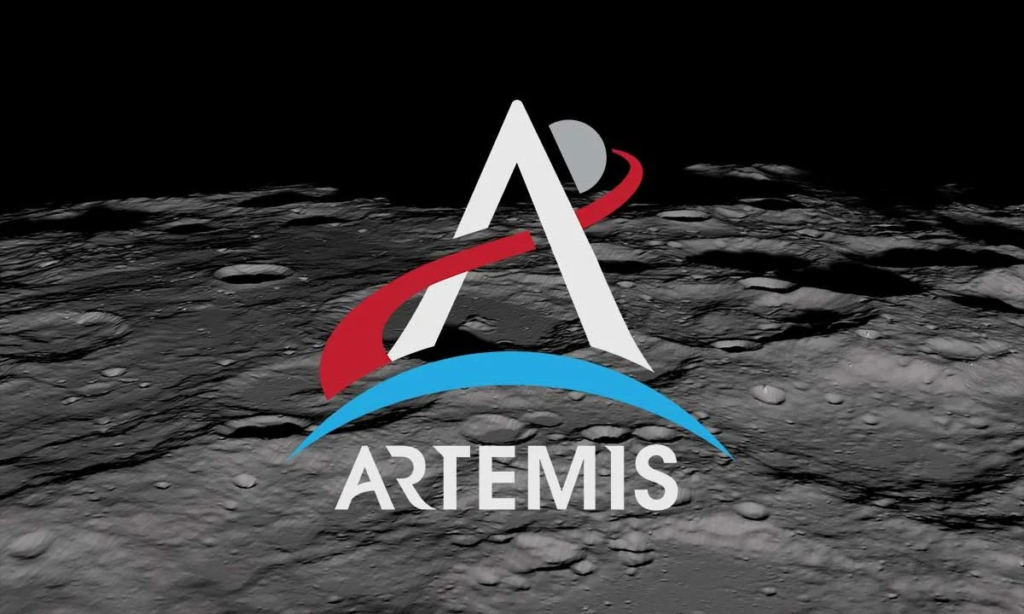Yo, imagine strapping on a headset and moonwalking without leaving Earth—sounds like a sci-fi flex, right? Well, NASA’s making it real in 2025 with virtual reality (VR) for their Artemis lunar missions. Teams at Johnson Space Center are ditching old-school training for VR sims, practicing lunar strolls and syncing flight control with science squads like it’s a high-stakes video game. Why? To nail those moon landings—like Artemis III, set for 2027—and make sure everyone’s on the same wavelength. But is VR just a fancy toy, or the future of space prep? Buckle up, fam—we’re breaking down how NASA’s turning headsets into moon boots, and trust, it’s more lit than you think.
The Main Deal: How VR’s Powering Artemis
NASA’s not just vibing with VR for kicks—they’re revolutionizing how astronauts, flight controllers, and science nerds prep for the Moon. Here’s the tea on why this tech’s a game-changer, with stats, examples, and a lil’ sarcasm for spice.
1. VR Moonwalks: Fake It ‘Til You Make It

At Johnson Space Center, NASA’s running Artemis III VR Mini-Simulations (fall 2024), where crew stand-ins strut around a virtual lunar south pole. Built with real data from the Lunar Reconnaissance Orbiter, the Nobile Rim 1 region’s mapped out—craters, shadows, and all. Astronauts test moonwalks in VR, dodging rocks and vibing with the terrain, while science teams watch live feeds. It’s like Fortnite, but with a $93 billion budget (NASA’s 2025 ask). Bri Sparks, NASA’s VR co-lead, told Mixed News: “VR’s high-fidelity without the field trip hassle.” No dust in your suit—just a headset and vibes.
2. Team Sync: Flight Control x Science Squad Collab
Ever tried texting your crew mid-game with laggy Wi-Fi? That’s the chaos NASA’s avoiding. VR sims link flight controllers—who keep astronauts alive—with science teams chasing lunar secrets. In the Mini-Sim, backup crews beamed video, pics, and audio to ground teams, mimicking real-time comms. Per NASA Science, 60+ controllers and scientists joined the test, smoothing out the “you do safety, I do rocks” divide. Flight director Paul Konyha tracked it live—less yelling, more winning. VR’s cutting the static so Artemis III doesn’t flop.
3. Cost and Flex: VR Beats Dirt and Jet Fuel
Traditional field tests? Think remote deserts, massive crews, and a year of planning—cha-ching! VR slashes that. Eddie Paddock, VR tech lead at Johnson, used orbiter data and planet positions to whip up a virtual Moon in weeks. No flights, no tents—just Meta Quest 3 headsets (yep, NASA’s rocking ‘em). Field tests won’t die—nothing beats real rocks—but VR’s cheaper and repeatable. OpenTools.ai says it’s “cost-effective AF,” letting NASA rehearse endlessly without breaking the bank. More sims, less stress.
4. Real Talk: How Real Is This VR Moon?
This ain’t your grandma’s VR Pong. The sims use 5 million+ elevation points from the Lunar Orbiter Laser Altimeter (ACM.org), nailing Shackleton Crater’s pitch-black shadows and jagged rims. Geologists even tweaked it for accuracy—moon dust plumes included. Astronauts feel the vibe, science teams plan traverses, and controllers dodge risks, all in a setup that’s 90% lunar realness. Sure, it’s not exactly zero-G, but it’s close enough to train without a $20 million jet ride.
The Wrap: VR’s NASA’s New MVP for Artemis
NASA’s VR game for Artemis is straight fire—teams are moonwalking in headsets, syncing flight and science crews, and saving cash while they’re at it. From the Artemis III Mini-Sim at Johnson to a virtual south pole built on hardcore data, this tech’s prepping the first woman and person of color to slay the lunar surface in 2027. It’s not just a gimmick—VR’s cutting costs, boosting collab, and making sure Artemis doesn’t crash and burn. Wanna see the future unfold? Keep an eye on NASA’s next moves—Artemis II’s crewed flyby is April 2026, and VR’s paving the way. Space just got a lil’ less out-of-reach, fam.


